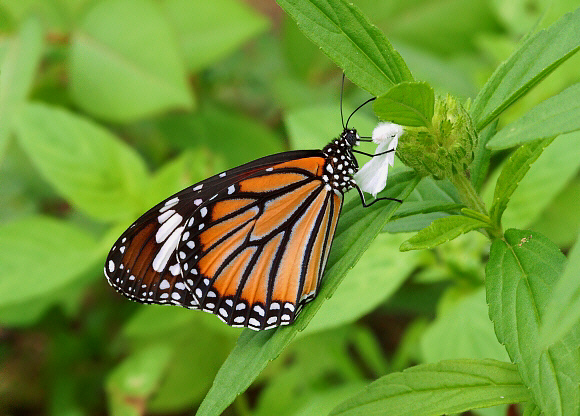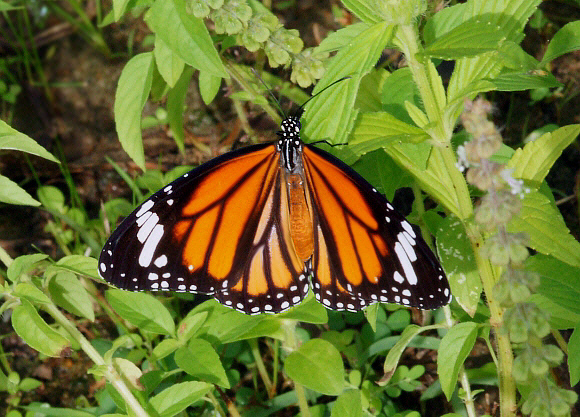
Introduction
The subfamily Danainae, which includes the Monarchs & Tigers, Nymphs and Crows, comprises of about 190 species worldwide.
The Monarchs and Tigers belong to the genus Danaus. They are all large butterflies, characterised by having orange wings with black veins, a white subapical band, and a double row of white spots around the margins of the hindwings.
All butterflies in this subfamily are thought to be toxic or distasteful to avian predators, their bodies containing toxins derived from the larval foodplants, and often supplemented by further toxins derived from adult food sources.
The bright colour and pattern of Danaus butterflies ‘advertises’ their distaseful qualities to potential predators in much the same way that the bands of yellow and black of wasps advertise the fact that they can sting. Consequently any bird that suffers the unpleasant experience of tasting a Danaus is unlikely to attack any similarly coloured butterfly. Effectively, a few individuals are sacrificed for the good of the species as a whole.
Danaus genutia occurs in Sri Lanka, India, Burma, Thailand, China, Malaysia, Borneo, Sumatra, Java, New Guinea and the north-eastern region of Australia.
Habitats
This is a lowland species occurring in disturbed forest edge habitats at elevations between sea level and about 500m.
Lifecycle
The eggs are laid singly on the leaves of Graphistemma, Stephanotis, Asclepias, Cynanchum, Metaplexis, Ceropegia, Gymnema, Marsdenia, Pergularia and Tylophora.
The caterpillar is black, marked dorsally with pairs of narrow white transverse dorsal bands, and rows of yellow spots. Below the spiracles there is a broad white broken band, in-filled with more yellow spots. Long black filaments with conical maroon bases project from the 2nd, 8th and 11th segments. These may possibly be used to disseminate pheromones, and may function to ward off predators or parasitoids.
The chrysalis is plump, rounded, smooth, and pale green in colour, marked with black dots and flecks of gold and silver. It is suspended by the cremaster from a stem, away from the foodplant.
Adult behaviour
The butterflies have a slow undulating flight with fairly shallow wing beats, and patrol flowery areas, circling about around the tops of Lantana bushes. Both sexes alight periodically to nectar, usually keeping their wings closed while feeding.
In the early morning large numbers of males of Danaus genutia, Danaus chrysippus, Euploea core and Tirumala septentrionis commonly aggregate at Senna bushes to feed on pyrrolizidine alkaloids oozing from the stems and seed pods. The alkaloids are processed by the butterflies and converted into toxins which convey them a degree of protection against insectivorous birds.
Late in the afternoon, particularly if it becomes cloudy, they commonly bask with wings outspread on bushes or on dry twigs. Cloud cover or lowering temperatures cause them to close their wings, and they then adjust their position to hang suspended from the twigs overnight. Sometimes groups of a dozen or more can be found clustered together at dusk on twigs or branches.

